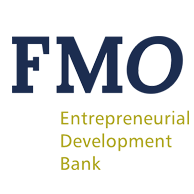Impact investors, especially development finance institutions (DFIs), are crucial for channeling investments into emerging markets and promoting sustainable economic growth and other positive development impacts — as well as generating healthy financial returns. However, to achieve their mission, these investors need to ensure that their activities mitigate adverse effects and positively impact the communities and the environment they serve. This is where impact management comes into play.
Impact management systems are essential to delivering the transparency and accountability demanded by regulators, public funders and civil society. They help better manage risk, while enhancing — and providing credible evidence of — development impact. Initially, the impact investing sector experimented with a multitude of unharmonized impact management approaches and metrics. But though this period of experimentation was well-intentioned, it soon became clear that if every organization measures, tracks and manages impact in its own way, it’s challenging for stakeholders to compare, analyze and understand differences among them. This lack of standardization also limits the potential for learning between organizations on what works and what doesn’t, as it becomes difficult to establish a direct comparison between different practices.
Growing standardization in impact management
In response to these challenges, after a period of growth that resulted in multiple competing approaches, there are growing signs of convergence, as different initiatives have emerged that aim to establish some standard principles and practices for managing impact. And while these standardization efforts initially focused on metrics — what should be measured, and how these metrics should be defined — the focus has shifted to the harmonization of management practices for impact. For instance, the Operating Principles for Impact Management — a common framework for the design and implementation of impact management systems hosted at the Global Impact Investing Network — have gained considerable traction: At the time of this writing, there are 184 signatories who have committed to aligning their impact management systems with these principles.
The Impact Management Platform and OECD-UNDP Impact Standards for Financing Sustainable Development offer alternative approaches to the same goal. Meanwhile, regulators are also pushing these efforts forward: For instance, for European investors, the EU’s new set of sustainability guidelines and regulations (e.g., the Sustainable Finance Disclosure Regulation, the EU Taxonomy for Sustainable Activities, the Corporate Sustainability Reporting Directive and the EU due diligence law) will affect how companies — and thereby their investors — define, track and measure their environmental and social impacts, while also influencing key elements of their impact management efforts.
Taken together, these various developments are improving harmonization and helping increase transparency in impact management. More importantly, they help investors align their development impact goals with their business strategies, and the results disclosed in annual reports provide an opportunity for reflecting on whether the strategies are effective or require adjustments. Indeed, the need to adjust these strategies when necessary is an integral part of impact management, as stated in the eighth Operating Principle for Impact Management: “Review, document and improve decisions and processes based on the achievement of impact and lessons learned.” If more investors disclose their approaches to impact management — and more importantly, their lessons learned from it — their fellow investors and other stakeholders can all collectively learn.
But the impact investing industry isn’t just moving toward shared impact management principles and practices: More recently, it has also begun conducting independent third-party verifications that check investors’ impact management systems against the industry standards.
For instance, Bluemark, an impact verification agency, conducts an annual comparison that highlights the best and most common impact management systems and practices among investors. Their assessment is based on an investor’s alignment with the Operating Principles for Impact Management, providing insight into the investor’s strengths and weaknesses while also offering valuable information that enables an organization to compare its impact management practices to those of the broader market. Based on the momentum these approaches have gained, it seems clear that these types of benchmarks will continue to gain traction in the industry, playing an increasingly important role in further developing the industry standards.
Developing tools to analyze and manage impact
At the organizational level, many DFIs and some impact investors have developed scoring methodologies to screen investments based on their expected development impact, as well as to track performance during the investment’s lifecycle. These scoring methodologies are often represented by a numerical rating (from 0 to 100, for example).
Scores contribute to impact management by ensuring that investments align to strategic priorities and goals. They enable DFIs and other impact investors to consider various factors like additionality, gender or climate impacts, and to assign different weights to these factors based on their importance to the investor’s strategy. Some investors embed country and sector information into the scoring methodology to assess how the investment addresses local needs and development gaps.
Scores also help DFIs and other impact investors apply a portfolio approach to development impact. This allows them to assess performance across investments, enabling them to balance development impact and healthy financial returns within the portfolio.
Yet one common limitation of most scores is that they do not measure results in a way that can be used to compare impact performance between investors — at least not yet. This is primarily due to variations in methodologies (the factors and weights included, for example) among different investors. Additionally, in our experience very few investors are sharing how (or if) the adoption of these tools actually leads to improved impact performance, nor are they assessing the effectiveness of these tools in improving development results. A promising solution to these limitations is the use of impact weighted accounts to drive the monetization of development impact, which can help to address the issue of comparison by assigning monetary value to the social and environmental benefits generated by investments. While these approaches haven’t yet garnered widespread adoption, they are poised to do so in the near future.
What should DFIs and investors be sharing more proactively?
At a time when the definitions and measurement of environmental and social effects may change due to the new European regulations on sustainability and reporting mentioned above, the industry would benefit from greater sharing and comparison of impact management practices, outputs and outcomes. Impact investors should focus on sharing three key elements regarding the effectiveness of their management practices and tools:
- How these practices and tools contribute to improved investment selection and decision-making;
- How they effectively identify deviations from expected impact, leading to corrective actions and learning;
- How they successfully embed learning at the end of the investment lifecycle, and at the portfolio level.
In summary, impact investors should strive to share the effectiveness of the approaches they’re using to improve their development impact, exploring how these practices are embedded into the decision-making process — and what can be learned from their implementation (including both successes and failures). Sharing what works, and being honest about what does not, will help the industry advance, enabling investors to overcome implementation obstacles faster and increase the effectiveness of their impact management efforts.
By FMO's Thelma Brenes Munoz and Mitzi Perez Padilla
Read here the full article on the website of NextBillion

